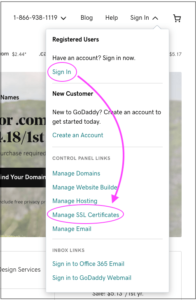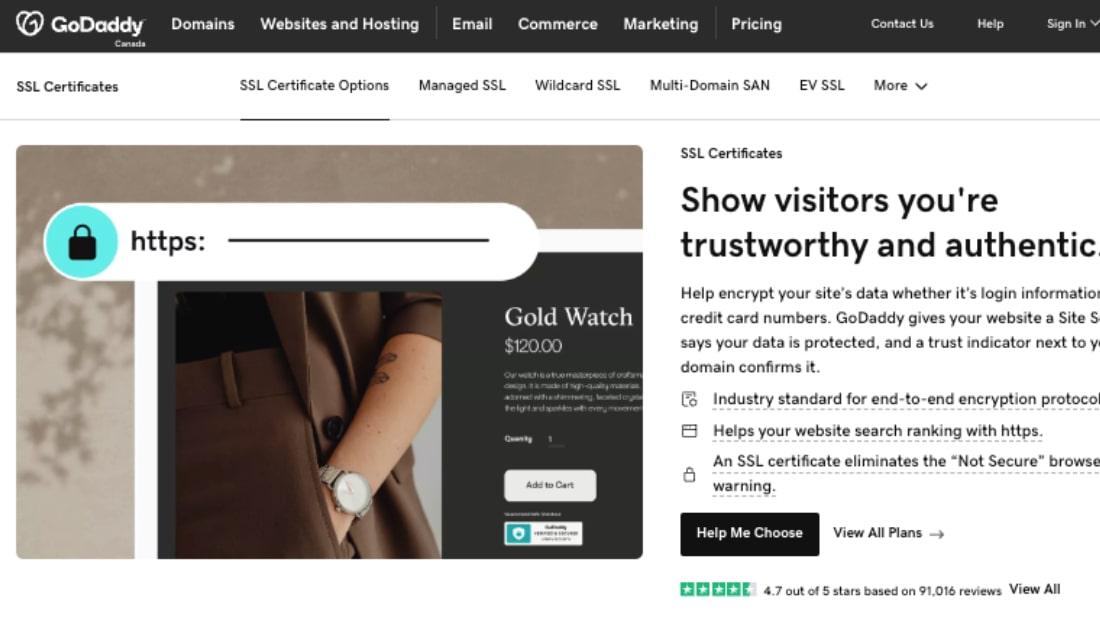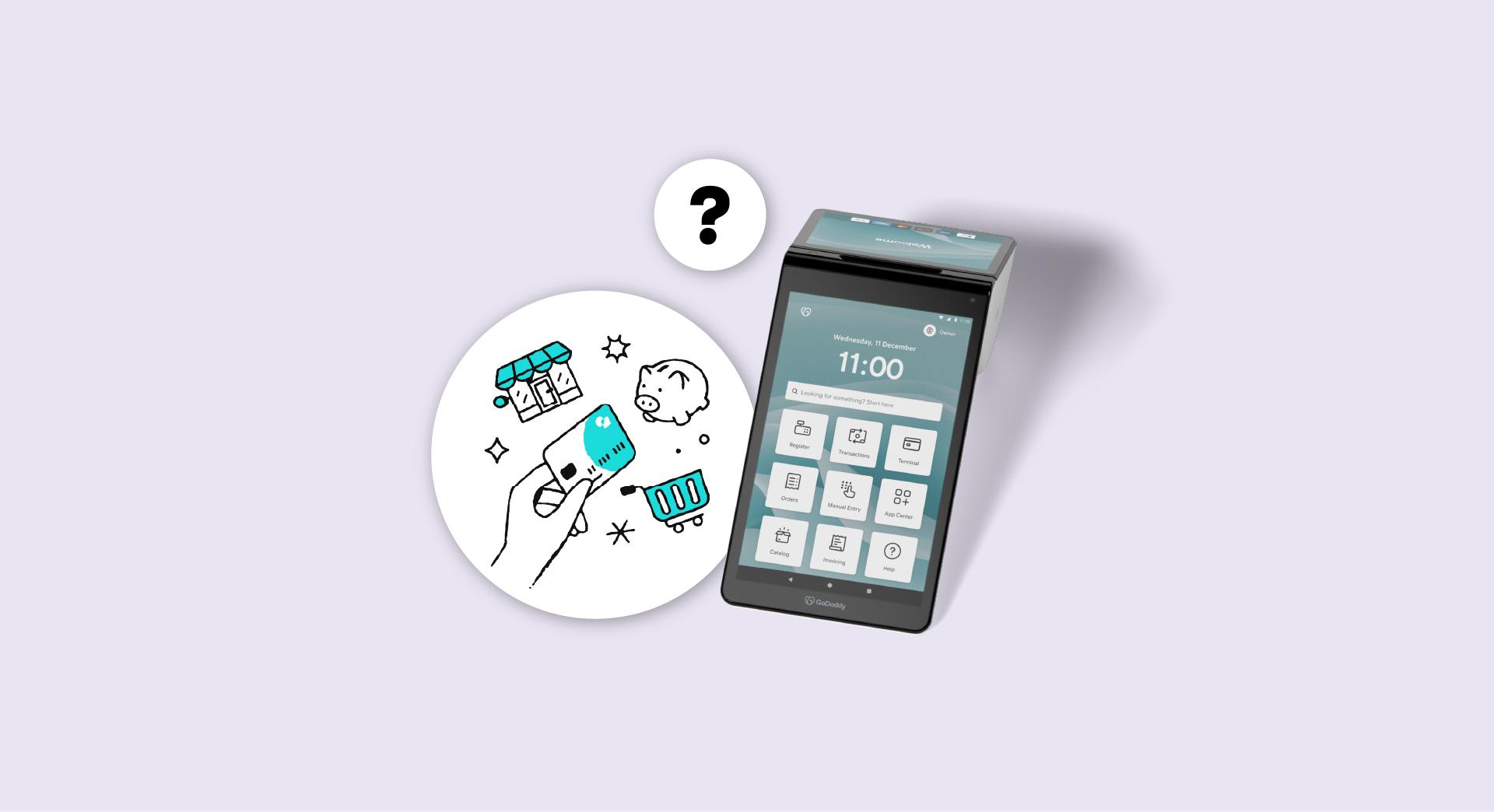This article on how to install an SSL certificate on cPanel was first published to GoDaddy’s U.S. blog on 20 July 2018, republished to the Canada blog in 2022, and updated in June 2025.
Since July 2018, the Chrome web browser has been labeling all sites that have not migrated to HTTPS as “not secure.”
Seeing this label obviously won’t inspire confidence for your users, which is a key reason that many websites have moved away from HTTP (hypertext transfer protocol) to HTTPS (hypertext transfer protocol secure).
This change is especially important for website security and visitor authentication, helping to protect sensitive data like usernames, passwords, and credit card numbers.
It’s also an all-around good idea, because it’s an easy way to protect users who visit your web site.
This post offers instructions to help you install an SSL certificate on cPanel, one of the most popular web hosting control panels in Canada and worldwide.
The Chrome browser has about 47.9% market share at the time of updating, making HTTPS and SSL/TLS adoption critical for any domain name aiming for credibility and trust.
The difference between http:// and https:// URLs is simple: security.
The “S” tacked onto the end signifies that the server uses encryption when communicating with the user’s browser.
That means any attempt to intercept the information exchanged between the browser and the server would only deliver gibberish to the attacker rather than useful information such as:
- Username and password
- Credit card number
Without the “S,” information is exchanged in plain text, which means that anyone who intercepts it—whether on a shared network, a compromised DNS, or via a misconfigured firewall—can read it.
Web browsers such as Chrome, Firefox, Safari, Edge and Internet Explorer display a padlock icon in the browser bar to indicate that a server is using HTTPS.
Some browsers may display a warning or a “not secure” label for websites without valid server certificates.

The only way to avoid the “not secure” label is to modify your server to employ HTTPS. Equally important, Google is said to slightly favor sites that employ HTTPS in search results, making SSL certificate installation an SEO factor for your domain name.
To make the move to HTTPS, you’ll need to obtain an SSL certificate and install it on your server.
You can do this by buying an SSL from a trusted certificate authority (CA) like GoDaddy, or by generating a free SSL certificate using Let’s Encrypt.
Alternatively, you can use a multi-domain SSL or a wildcard certificate if you need to secure multiple subdomains or domain names.
The SSL certificate you choose may depend on your server type—be it Apache, NGINX, IIS, or Microsoft Exchange—and on your unique web hosting setup.
What is an SSL?
SSL stands for Secure Sockets Layer, which is a standard protocol used to create an encrypted connection.
The SSL certificate enables authentication of your website and a secure, encrypted link between the web server and the client browser, protecting user data and improving overall website security.
When a user visits your site using an https:// URL, the SSL certificate is sent to their browser.
The certificate contains a public key that is necessary for initiating the secure connection, along with other details that help ensure that your server can be trusted.
The web server uses the public key in conjunction with a second, private key, to securely scramble and then unscramble communications for the intended recipient.
This is known as public/private key encryption. For most installations, you’ll also deal with intermediate certificates to complete the trust chain from your certificate authority to your server.
Before you can install your SSL certificate, your hosting provider or control panel (like cPanel, WHM, or Plesk) will often require a certificate signing request (CSR) and a private key. The CSR is generated on your server and submitted to a CA, such as GoDaddy or Let’s Encrypt. This process involves domain validation, and in some cases, extended validation for higher-trust certificates.
Related: Small business network seccurity in the age of cyberattacks
How do you install an SSL certificate on cPanel?
These instructions describe the process of installing an SSL Certificated provided by GoDaddy, which also offers a Managed SSL Service for those in a hurry.
The installation instructions below apply to GoDaddy’s deluxe and extended validation certificates, as well as SSLs for add-on domains or subdomains.

After GoDaddy approves your certificate request, you’ll be notified. Next, just download your certificate from the SSL manager and install it on your cPanel hosting account.
- If you haven't done it already, save the .crt file somewhere that's easy to find.
- Now go to your GoDaddy My Products page.
- Select Web Hosting and then Manage for the cPanel account you're installing the SSL on.
- Select cPanel Admin.
- In the Security section, choose SSL/TLS.
- Under Certificates (CRT), select Generate, view, upload, or delete SSL certificates.
- In the Upload a New Certificate section, select Choose File and navigate to the .crt file you downloaded in step 1. Select the file and then click Open.
- Type a description of the certificate in the Description text box if you want.
- Click Upload Certificate.
- When you get confirmation that the certificate has been saved, select Go Back.
- At the bottom of the SSL Certificates page, select Return to SSL Manager.
- Under Install and Manage SSL for your site (HTTPS), click Manage SSL Sites.
- In the Install an SSL Website section, select Browse Certificates.
- Select the certificate that you want to activate and click Use Certificate. This will auto-fill the fields for the certificate.
- At the bottom of the page, select Install Certificate.
- On the Successfully Installed pop up, click OK.
Your SSL certificate is installed!
Now you need to direct visitors to the secure version of your site by redirecting to HTTPS.
If you’re using WordPress, many tutorials are available to help you update your site’s URLs and ensure proper HTTPS redirection.
Prefer a video demonstration on how to install your SSL certificate on cPanel? You’ll find one here, featuring GoDaddy Guide Joplin.
Extra Tips:
- For advanced configurations on Apache, NGINX, or IIS, consult platform-specific tutorials for SSL/TLS setup.
- If you manage your own DNS, make sure your DNS records point to the correct IP address and hostname before and after SSL installation.
- If you have multiple domains or subdomains, consider a multi-domain SSL or wildcard certificate for easier management.
By following these installation instructions, you’ll boost your website security and user trust—making your domain name stand out in search results and ensuring peace of mind for your visitors.
How to install an SSL certificate on cPanel FAQs
How to activate an SSL certificate?
To activate an SSL certificate, first complete the certificate signing request (CSR) on your web server or control panel, such as cPanel or WHM. Submit the CSR to your certificate authority (CA), like GoDaddy or Let’s Encrypt, for validation. Once your SSL certificate is issued, upload the certificate file (CRT), any required intermediate certificates, and your private key to your hosting account. Finally, install the SSL certificate using your hosting provider’s SSL/TLS manager and redirect your website traffic to HTTPS.
What is needed to install an SSL certificate?
To install an SSL certificate, you need the following:
- Access to your web server or control panel (e.g., cPanel, Plesk, or WHM)
- A certificate signing request (CSR) and private key, usually generated on your server
- The SSL certificate file (CRT) issued by your certificate authority (CA)
- Any required intermediate certificates for the trust chain
- The domain name you want to secure
- Basic knowledge of your server type (such as Apache, NGINX, or IIS)
Do browsers trust Let’s Encrypt Certificate?
Yes, all major web browsers—including Chrome, Firefox, Safari, and Edge—trust SSL certificates issued by Let’s Encrypt. Let’s Encrypt is a widely recognized certificate authority that provides free SSL/TLS certificates, making it a popular choice for website security and HTTPS activation.







